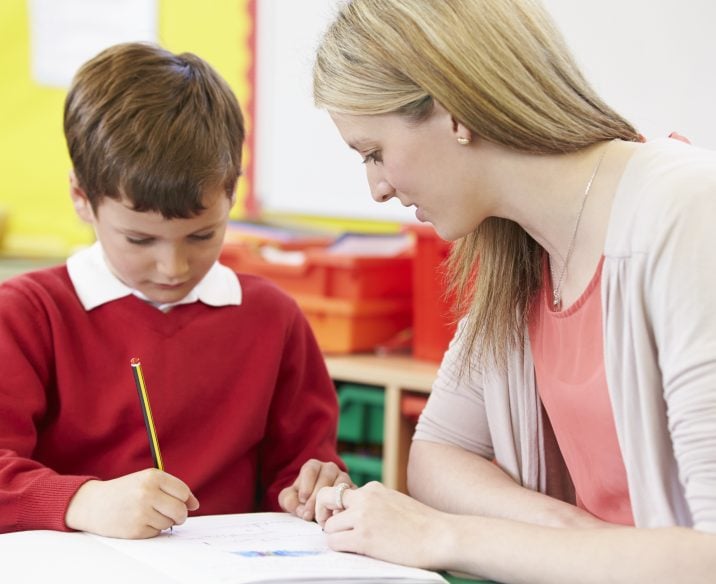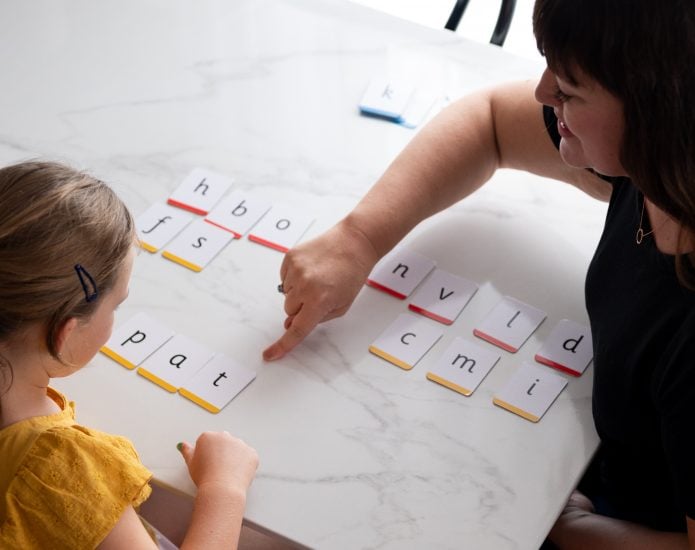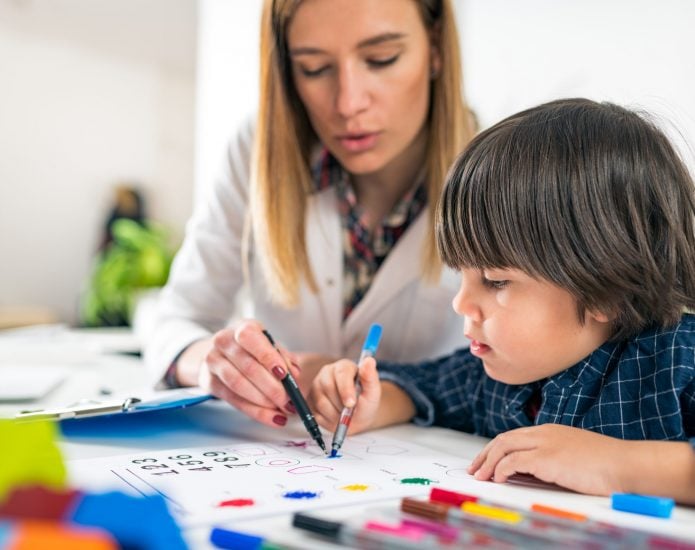
A learning difficulty is a term used to describe children and adolescents who struggle in acquiring, retaining, organising and using skills in the areas of listening, speaking, reasoning, reading, spelling, writing, and mathematics. These children may also experience difficulties in the areas of visual and auditory perception, processing skills, memory, mood (anxiety and depression), motor skills planning and attention.
The term learning difficulty is not a formal diagnosis, however it is commonly used in school environments to describe children struggling to learn in the classroom in a number of areas. The term learning disability is also not a formal diagnosis but can sometimes be used to describe a more persistent form of learning difficulty.
Learning difficulties are not only caused by internal factors such as neurodevelopmental differences, sensory impairment, behavioural challenges and psychological issues, but can also be attributed to external factors including the school or home environment, opportunities and relationships.
Children and adolescents with learning difficulties or disabilities can display some of the following characteristics:
- slower processing of information presented in class;
- poorer retention of facts and processes;
- inconsistent performance during class activities and assessments; and/or
- lower self-esteem and confidence related to learning.
Children and adolescents experiencing difficulty with learning in school and at home may be referred for formal assessment of their difficulties. The terms learning difficulty and learning disability are not formal diagnoses and will rarely appear in an assessment report, but are umbrella terms to describe global difficulties in learning. A formal diagnosis of a specific learning disorder may be mentioned in a report from a Psychologist, following a comprehensive assessment and consideration of learning difficulties.
There are a variety of things that may indicate that your child is struggling at school. Behavioural problems, inability to follow instructions or avoiding taking part in activities are just some of the clues that might point to a learning difficulty.
Signs of a Learning Difficulty for Parents to Look Out For
Children can be very good at hiding difficulties, and this can make it tricky for parents. If you start to have any concerns about your child’s learning, or their attitude around school, here are some simple questions to think about.
Homework
Does your child take longer than expected to complete homework? Do they need you to read written instructions to them?
Oral language
Can your child explain something clearly so you can understand without having to ask a lot of questions? Do they use words such as ‘thing’ or ‘sort of’ and describe an object rather than name it? Does your child have difficulty organising their ideas sequentially? Do they have articulation problems (difficulty saying certain sounds or getting words wrong)?
Attention
Is your child flighty or do they find it hard to settle and complete tasks, even though they can concentrate really well when doing something they like? Do they constantly ask someone else what to do next?
Understanding language
Can your child follow a set of two or three instructions? Do they constantly ask for clarification or say ‘what do you mean’? Do they have difficulty with prepositions such as next to, under, left or right? Do they find it hard to follow the story line in a movie or video? Do they understand jokes and metaphors in language e.g. green with envy?
Avoidance tactics
Does your child avoid taking part in activities such as puzzles and games? Can they tell you a great story and produce a wonderful, multi-coloured heading but don’t write anything on the page?
Organisation
Does your child constantly mislay or forget things? Is their desk and bag a mess? Do they have difficulty beginning tasks? Do you complain that they leave everything to the last minute?
Social skills
Does your child seem to lack confidence or are they stressed and anxious? Do they relate appropriately to the others in their class? Are they constantly in trouble? Do they fail to join in class discussions and dislike group activities?
Behavioural changes
Has your child’s behaviour changed markedly during the year without any apparent reason? Do they seem more anxious, tearful or aggressive? If there have been no major changes at home such as a divorce, illness, moving house or a new baby, these behaviours may indicate that they are having trouble learning.
Reading difficulties
Is your child reluctant to read, reads very slowly and is very dependent on sounding out words? Do they have difficulty remembering words? Can they segment, then blend sounds to read an unknown word? Have they developed phonological skills such as identifying and producing rhyming words? Can your child identify the initial and final sounds in words? Are they able to read the words, but have do not understand the story?
Written work
Does your child avoid written activities? When they write, are the sentences incomplete? Can they write on the line with appropriate spacing between the words and letters? Do they have a major difficulty with spelling?
Getting Support
These are just some common indicators which may mean that your child has a learning difficulty.
If you have any concerns, we recommend that you first speak with their teacher to understand how they’re coping in the classroom, or contact Learning Links’ Intake team to discuss whether your child may need additional support from a professional.
The earlier learning difficulties are identified, the more opportunities there are to provide personalised support to ensure you child can learn, interact alongside their peers effectively and reach their full potential at school – now and in the future.




